
Corsair Strafe RGB MX Silent Review
Manufacturer: CorsairUK price (as reviewed): £139.00 (inc VAT)
US price (as reviewed): $159.99 (ex Tax)
Out first look at Corsair's new Strafe keyboard revealed a change in the company's premium line-up of mechanical keyboards. It was a predominantly plastic affair and lacked a number of features we've seen on its previous, generally excellent keyboards too. That said, it included replacement textured WASD and MOBA keysets, it was solid, and only just missed out on an award.
Click to enlarge
Today though, there's a new Strafe and it's a much more interesting product for a number of reasons. Firstly, it includes a large wrist rest that clips onto the base of the keyboard chassis and provides a good, if not stellar amount of support whilst typing; it needs to be a little higher and a little longer to do this, but it's something the original Strafe lacked entirely. The newest addition to the Strafe family also sports RGB backlighting, so with Corsair's fully-programmable software suite, the customisation on offer in terms of per-key lighting is second to none.
Click to enlarge
However, there's a far more important addition here - Cherry MX Silent mechanical switches. Now, for most of us, mechanical key noise isn't an issue and it can even be part of the appeal, but it's definitely preventing some from joining the mechanical crowd and causing current users to gain the scorn of office coworkers or housemates that take offence to the tap-tap-tapping.
Click to enlarge
There are a few options already here if you're looking to upgrade from a generic membrane keyboard. Some of the more expensive membranes offer better features and slightly better keystroke feedback, while others have membrane-based raised scissor switches such as the i-Rocks Golem. These are just as quiet as traditional membrane keys but offer improved feedback, although they're still not as slick and tactile as Cherry MX switches.
Click to enlarge
You also have Topre switches on keyboards such as CM Storm's NovaTouch TKL, but here you start to introduce a noticeably louder keystroke, and the switches themselves are extremely expensive. The issue of noise affects all the popular Cherry MX switch colours - Black, Brown, Red and Blue. Bottoming out is most noticeable on Red, Brown and Black switches, while Blues have their more unique but even louder click feedback, and all suffer from spring-back too - the tapping caused by the key returning upwards.
Click to enlarge
The former can be largely solved with o-rings or foam pads, but spring-back remains far louder than on membrane keyboards. So, for anyone that simply isn't willing to compromise on the noise issue, where do the Cherry MX Silent switches fit in? There are two types available, which were announced in August, and they're essentially silent versions of Cherry MX Red and Black switches - this makes sense since these are both entirely linear switches and thus those with the simplest design. Our sample sports the Red variety, which claim to reduce noise by up to 30 percent compared to a standard Red switch.
Click to enlarge
It's something Corsair has been considering for a while as there's a small but vocal voice in the community that has been asking for quieter switches. So, how have they gone about it? In Cherry's own words, in order to suppress noises optimally, the precision switching slide has been supplemented with a TPE elastomer component. It's this that reduces bottom out and spring-back/top out noise. However, in doing so, the actuation force and general feel of the switch hasn't been altered - there's just a reduced impact at the top and bottom. For example, as you can see below in graphs we've grabbed from official Cherry datasheets, the standard and silent versions of the Red switch are identical in terms of characteristics and both sport a 45cN actuation force.
Left - Cherry MX Red Silent. Right - Cherry MX Red - Click to enlarge
 The bottoming out actually feels a little like o-rings have been applied too - there's no harsh tap as the key hits bottom as you usually get with Cherry MX Reds. In a similarly dampened way, the spring-back noise has also been reduced, but with little if any discernible change in spring-back force or indeed any part of the keystroke.
The bottoming out actually feels a little like o-rings have been applied too - there's no harsh tap as the key hits bottom as you usually get with Cherry MX Reds. In a similarly dampened way, the spring-back noise has also been reduced, but with little if any discernible change in spring-back force or indeed any part of the keystroke. So, the big question - how loud are the Cherry MX Silent switches? If you're coming from a membrane or scissor switch-based keyboard, sadly, they're still noticeably louder. The membrane layer in these keyboards still seems to absorb a lot more sound and even lightly tapping but not fully depressing the keys is noticeably louder on the Strafe, where the keys do rattle around a lot more on the switch - something common to Cherry MX keyboards. The bottom out is definitely harsher and while spring-back is far less noisy than standard Cherry MX Reds, for example, it's again an order of magnitude quieter on a membrane keyboard.
However, the difference between the Silent and standard switch is remarkable - there's a huge amount of noise reduction going on and it's massively noticeable whether you're doing single key test taps or typing at a fair speed. If you're a light typist and rarely bottom out, it's especially quiet although again, the initial tap on the keys and spring back are definitely noisier than a membrane keyboard.

MSI MPG Velox 100R Chassis Review
October 14 2021 | 15:04

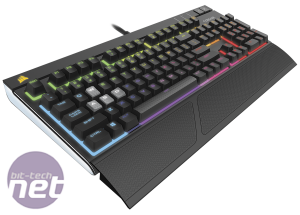
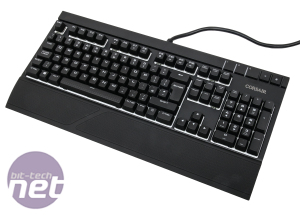
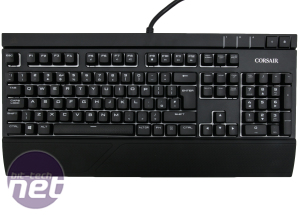
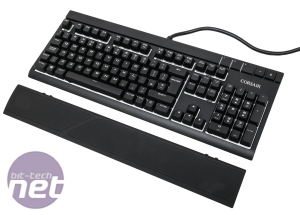

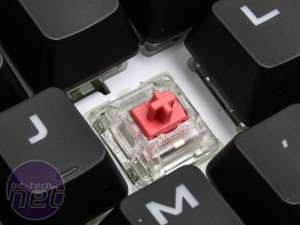
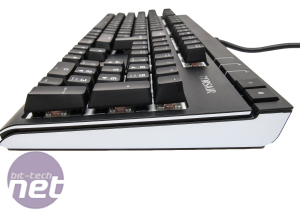
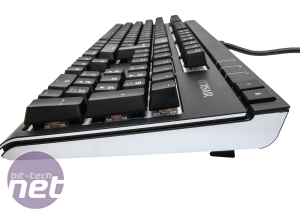
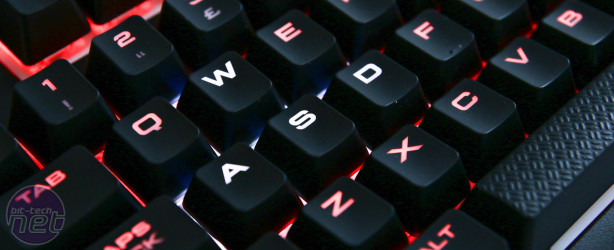

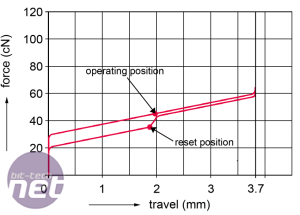
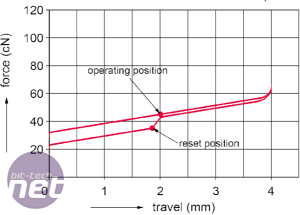







Want to comment? Please log in.